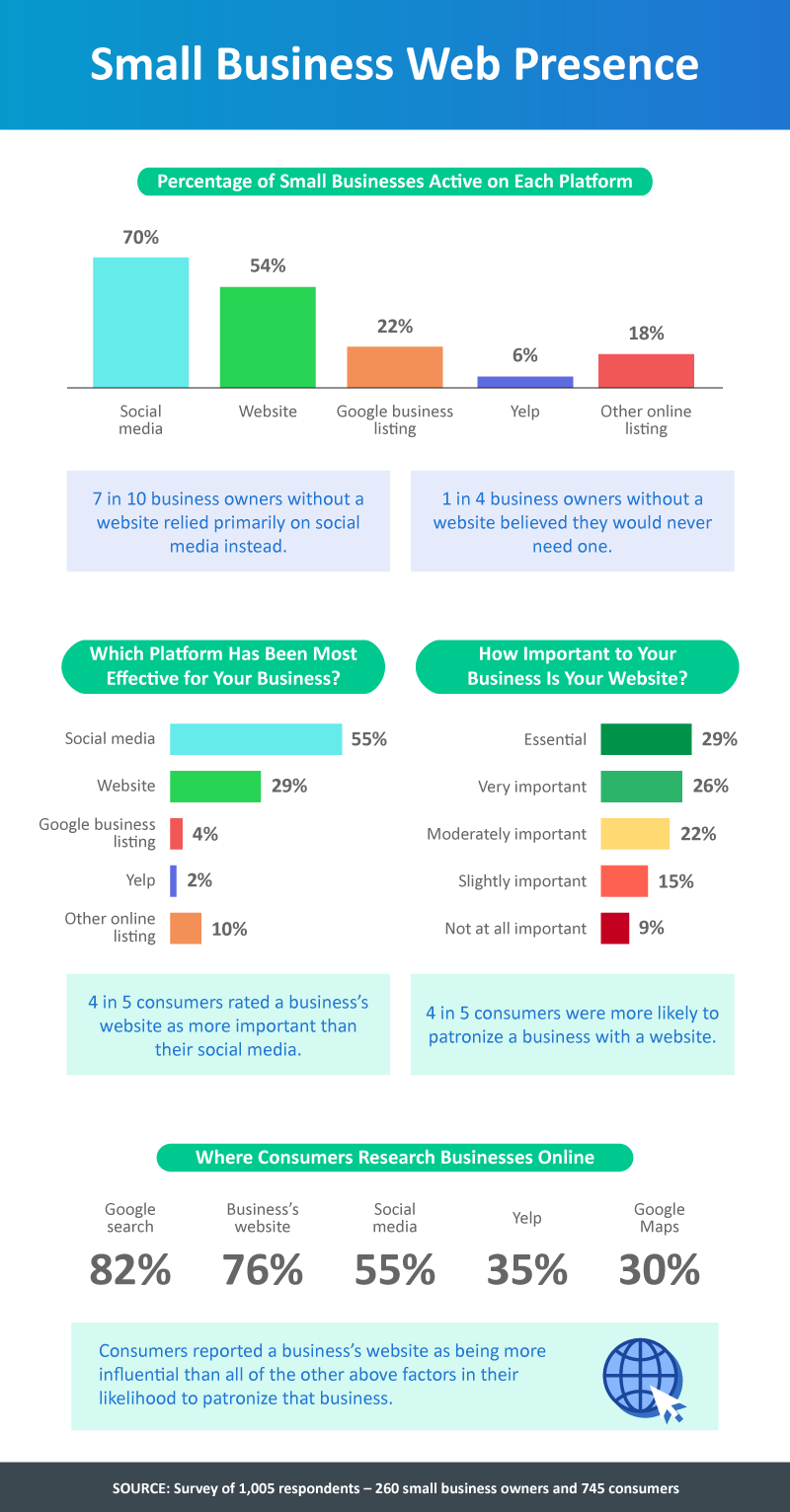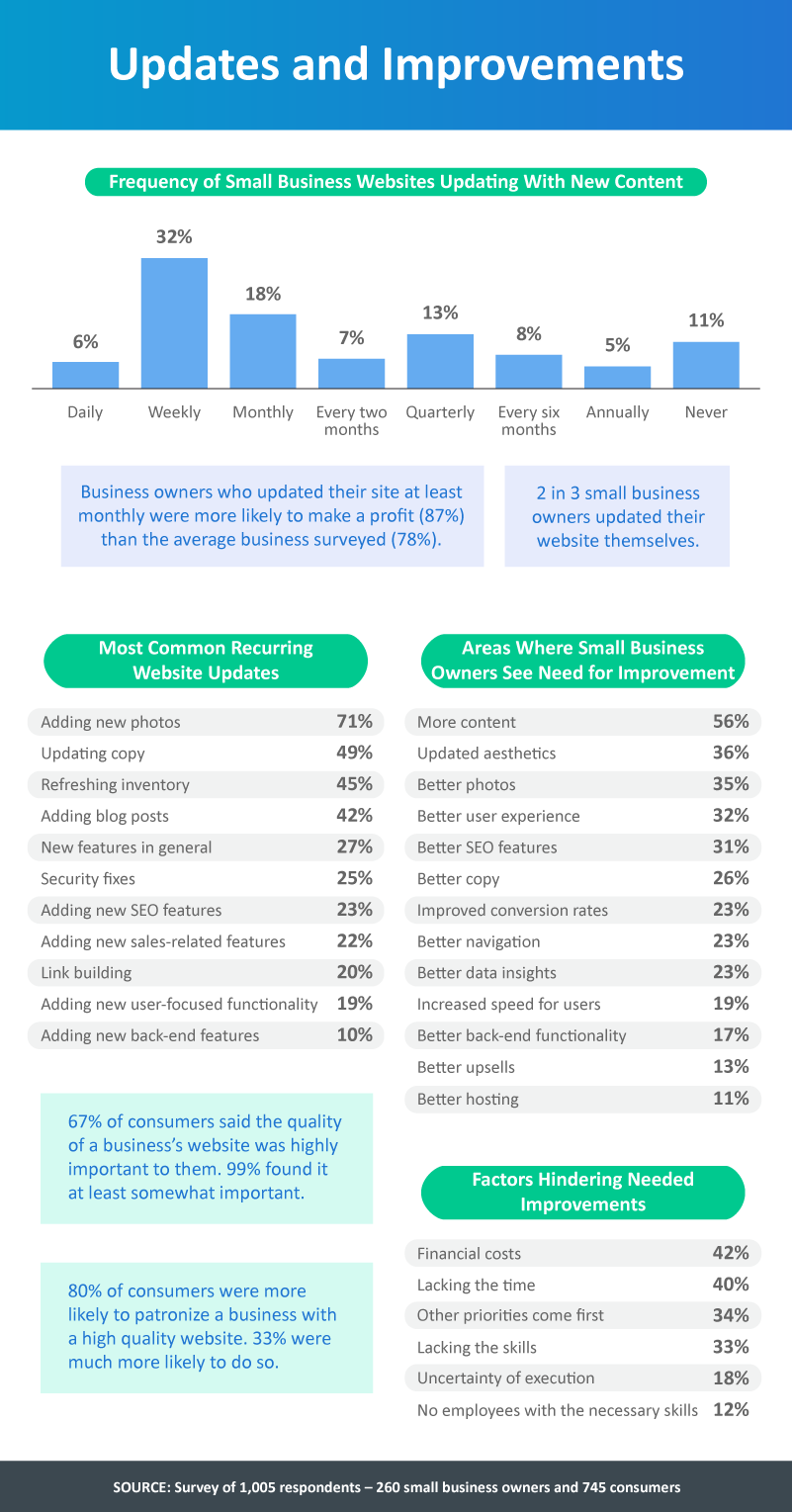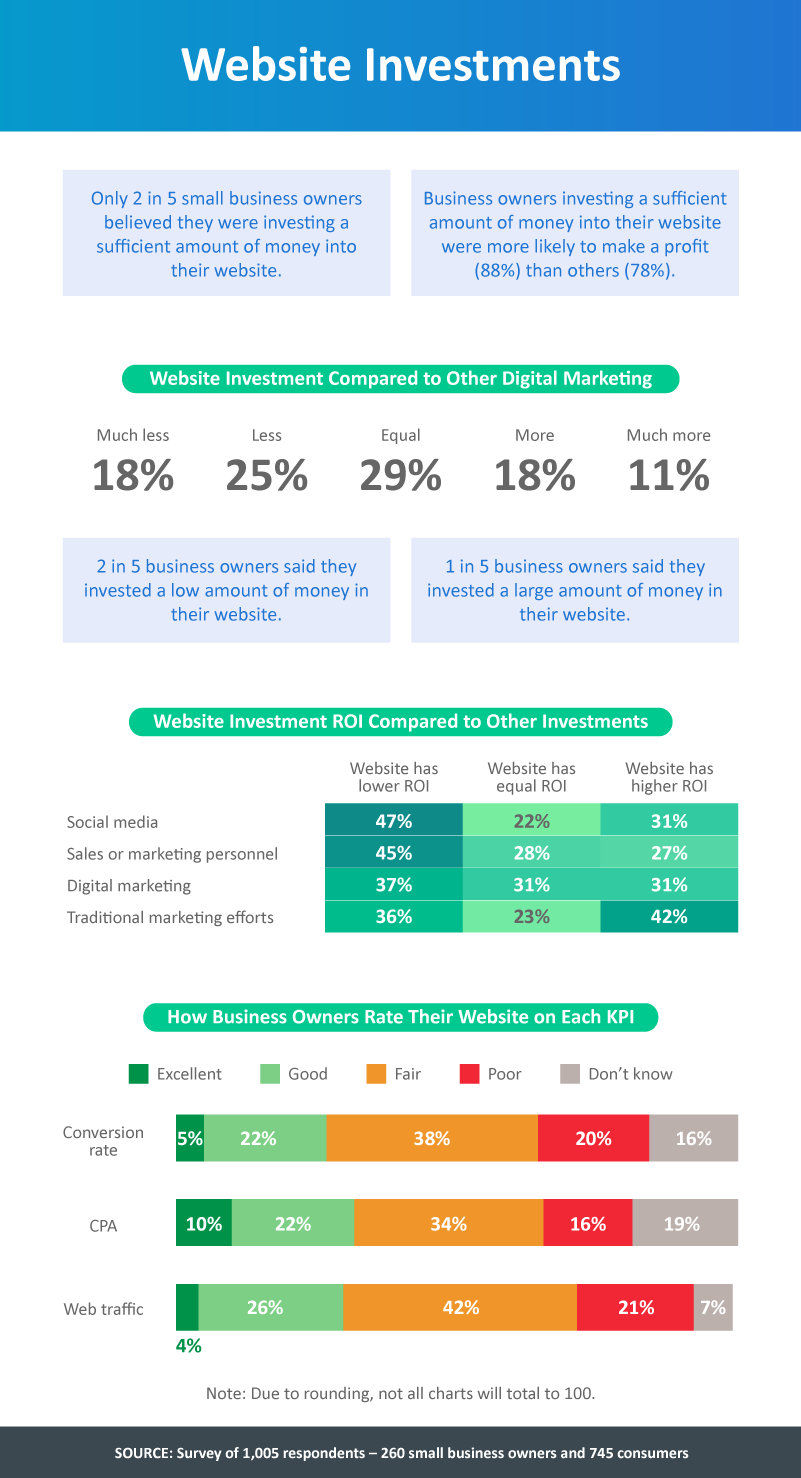
In the current climate catalyzed by the global COVID-19 pandemic, Americans are spending more money shopping online than ever before. In the second quarter of 2020, consumers spent $211.5 billion on e-commerce, an increase of nearly 32% from the quarter before, while retail sales continue to decline.
While this digital focus on online sales means revenue increases for major retailers like Amazon and Walmart, the pandemic has forced small businesses to adapt their e-commerce strategies if they want to survive. More than just offering goods and services through online operations, this means rethinking their social media and marketing strategies as well.
So how are online shoppers deciding where to spend their money, and what does this mean for business owners? To find out, we surveyed over 1,000 people, including both consumers and small business owners, about how they’re evolving in 2020. Read on as we explore which platforms have been the most effective for business owners; how frequently they’re updating their online presence; how they prioritize investing in their website versus other forms of digital marketing; and what consumers are really looking for when they’re shopping online.
Table of Contents
Small Businesses Online
Perhaps unsurprisingly, the social distancing and self-quarantine measures encouraged during the COVID-19 pandemic have led to a surge in social media usage, though in 2019, many small businesses don’t have websites or social media profiles to help capture this traffic.

Our survey found that 70% of small businesses report being active on social media, followed by fewer who utilize their own websites (54%), a Google business listing (22%), and other online listings (18%) for their brands. Among businesses without a website, 7 in 10 indicated relying primarily on social media instead to market themselves. A quarter of business owners without a website admitted they never expected to need one.
Social media was a more popular platform than managing a website for many business owners, and it may be more effective. Fifty-five percent of business owners reported social media was the most effective platform for their business, followed by a website (29%) or another online listing (10%). Just 29% of business owners indicated their website was essential, while 15% said it was just slightly important, and another 9% felt it wasn’t important at all.
In contrast, 80% of consumers rated a business’s website as more important to them than social media, and equally as many were more likely to patronize a business with a website over one without. Overwhelmingly, 82% of shoppers reported searching for businesses online via Google, followed by going directly to a business website (76%), their social media (55%), and Yelp (35%).
What Customers Are Looking for Online
For many consumers, simply having a website isn’t enough to convince them to patronize a business, and many indicated they have standards for both what appears on a business’s website and how that information is laid out.

Seventy percent of consumers (including 72% of women and 68% of men) indicated informative product descriptions were important to a business’s website, followed by the appearance of trustworthiness (66%), high-quality product photos (65%), clear shipping and return policies (65%), and customer or user reviews (64%). Women were 13 percentage points more likely to indicate clear shipping and return policies were important compared to men, and 17 percentage points more likely than men to value clear use and navigation.
When asked to describe the most important website features when shopping online, consumers voted for informative product descriptions, customer or user reviews, and the appearance of trustworthiness. Among things that would make consumers shop elsewhere were poor-quality photos on a website (65%), difficulty finding information (61%), products being out of stock (55%), and few “signs of life” or a lack of updates (52%). When a product was out of stock, 69% of consumers reported opting in for notifications when it became available again, and 66% returned to the website to purchase a product.
Refreshing Website Content

For small businesses, building a website to promote their brands shouldn’t be a set-it-and-forget-it kind of undertaking. As many consumers indicated, websites that seem out of date or abandoned are less likely to inspire confidence and may even encourage people to look elsewhere for their purchase needs.
According to small business owners, 32% reported updating their websites on a weekly basis, and another 18% refreshed their content at least monthly. While 11% admitted to never updating the information on their websites, more than 30% of small business owners acknowledged only renewing their content somewhere between every two months and once a year. Just 6% of business owners updated the data on their websites daily. More than making sure consumers know a site is active, it’s also helpful for business owners to reevaluate their online presence to ensure they’re utilizing current marketing trends in the way data is presented, particularly if they offer online sales.
Business owners who updated their website at least once a month were more likely to report being profitable during the COVID-19 pandemic. Two in 3 business owners also indicated updating their websites on their own, proving it doesn’t have to be an expensive undertaking. The most common recurring updates included adding new photos (71%), updating website copy (49%), refreshing online inventory (45%), and adding blog posts (42%).
Sixty-seven percent of consumers said the quality of a business’s website was highly important to them, and even more (80%) confessed they were more likely to patronize a business with a high-quality website.
Building a Marketing Budget
For many businesses owners, deciding how much money to invest in their website also means taking their broader marketing budgets into consideration. Deciding to invest in social media platforms, digital marketing, and other traditional marketing efforts can be difficult, and they don’t all promise the same return on investment.

Just 2 in 5 small business owners believed they’re investing a sufficient amount of money into their websites, but those that do feel the investment is adequate were also more likely to indicate being profitable (88%), compared to those who might not be spending enough (78%).
Twenty-nine percent of small business owners reported investing an equal amount of money in their websites as they were their other digital marketing efforts, though 25% admitted to spending less on their website, and another 18% said they spent much less on their website. On average, business owners were typically more likely to indicate their website offered a lower return on investment compared to their social media expenses (47%) and their sales or marketing personal (45%). However, their websites offered a higher return on investment (42%) than their traditional marketing efforts.
While 38% of business owners reported a fair conversion rate on the traffic to their website and another 27% indicated conversion rate was either good or excellent, 16% of business owners admitted they weren’t sure what their conversion rate was, making it difficult to judge their website’s effectiveness.
SEO Performance You Can Count On
In the midst of a global health pandemic, online presence is crucial for some businesses. Being able to offer their products or services digitally or capture potential consumer attention through digital platforms where customers are congregating can be the difference between profit and failure. As we found, consumers were more likely to patronize businesses where brand websites seemed up to date, had high-quality images, and were generally trustworthy. Roughly 1 in 3 consumers were much more likely to shop with a business whose website appeared to be of a higher quality.
At Best SEO Companies, we take your digital marketing seriously. If you’re looking for a reliable SEO partner to help your website get the traffic you need, we help curate results for a proprietary ranking methodology and then connect you with the agency that best meets your needs. For businesses in e-commerce, real estate, legal work, creative industries, and contractors, it’s never been more important to make sure customers are finding your brand. Get the rank you need now by visiting us on the web at BestSEOCompanies.com today.
Methodology and Limitations
We surveyed 1,005 respondents using the Amazon MTurk and Prolific survey platforms. 260 respondents were small business owners and/or entrepreneurs, and 745 respondents were consumers. 523 respondents were male, 481 respondents were female, and one respondent did not identify as male or female.
To help ensure accurate data, respondents were required to correctly answer an attention-check question. In many cases, questions and responses were rephrased for brevity or clarity. These data rely on self-reporting, which can be subject to issues such as exaggeration and recency bias.
Fair Use Statement
Inspire your readers to give their websites the attention and care they deserve by sharing the results of this study for any noncommercial use. We simply ask that you include a link back to this page in your story so your readers have full access to our complete findings and methodology.
 Best SEO Companies
Best SEO Companies Best SEO Companies
Best SEO Companies